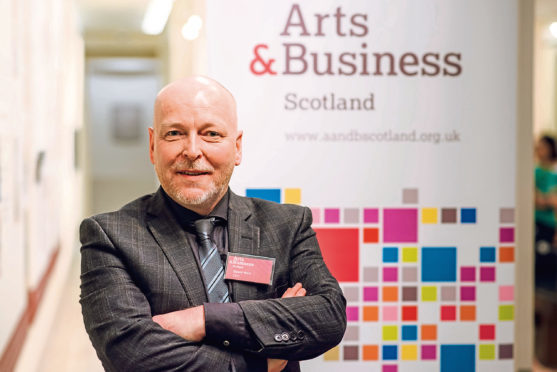The boss of a Scottish charity promoting closer collaboration between the cultural sector and the business community has hailed the body as a UK leader.
David Watt, chief executive of Arts & Business Scotland (A&BS), also outlined to the Press and Journal the key challenges.
A&BS was formally demerged from Arts & Business UK in October 2011 and has nearly 300 members up and down the country – 225 arts and heritage organisations and 50 businesses.
Business members include Clydesdale Bank, Aberdeen & Grampian Chamber of Commerce and the Scottish Salmon Company.
Among those from the arts world are Aberdeen Performing Arts, Dundee Rep and Edinburgh International Book Festival. Edinburgh World Heritage, Fife Historic Buildings Trust and Dundee Industrial Heritage are just some of the heritage members.
A&BS says it acts as a conduit between the cultural and business sectors – helping to nurture the creative, social and commercial relationships which will enrich creativity and cultural engagement across Scotland.
The charity’s business sponsorship incentive funding schemes have levered millions of pounds into new cultural projects across Scotland.
Mr Watt said: “While A&B Northern Ireland and A&B Wales have a more modest version of the schemes, A&B in England has no such incentive fund – meaning A&BS is leading the way on establishing business and cultural partnerships in the UK.”
He said that one key ongoing challenge for A&BS is to persuade more businesses to engage with Scotland’s cultural sector.
“We seek to do this by showcasing the multiple benefits to business of partnering with cultural organisations – be that in terms of exchanging transferable skills, forging stronger relationships within the communities where they operate, demonstrating good corporate responsibility credentials and enhancing their reputation, or providing additional motivation to their workforce and attracting new talent.”
Mr Watt said a key challenge the cultural sector faces is to remain financially viable in a climate of shrinking public budgets and falling lottery revenue.
He said: “A&BS’s role here is to provide a range of training, advice and practical support to help cultural organisations tap into alternative sources of funding, including the development and implementation of effective fundraising strategies and mutually beneficial partnerships with business.”
Mr Watt said another key challenge is to raise awareness among politicians and decision-makers about the huge value A&BS is able to bring to Scotland’s cultural sector and to Scottish business through the broad range of programmes it offers – and, in so doing, secure ongoing buy-in and support for the work the charity does.
Since the demerger, A&BS has launched and managed a variety of funding, training and partnership programmes to promote closer collaboration between the cultural sector and Scotland’s business community.
Mr Watt said these included last year’s launch of the Culture and Business Fund Scotland, designed to promote collaboration between the cultural and business sectors by matching business sponsorship of cultural activities pound for pound.
Funded by the Scottish Government via Creative Scotland and Historic Environment Scotland and managed by A&BS, it is the successor to the charity’s new arts sponsorship grants programme which ran from 2006 until last year.
In this period, the programme invested more than £7.5million across more than 500 individual arts and heritage projects throughout Scotland.
Mr Watt said the Culture and Business Fund Scotland aims to build on that successful legacy.
Meanwhile, from 2014 to this year, A&BS has run the Resourcing Scotland’s Heritage training programme, providing practical fundraising information and advice to individuals and organisations from across Scotland’s heritage sector.
During this time, A&BS’s membership has also expanded to include many new members from the heritage sector.
Last month, A&BS hosted a conference in Edinburgh celebrating fundraising for Scotland’s heritage sector, bringing together some 200 delegates from all sizes of organisations.
Asked about plans for the future, Mr Watt said: “As the Resourcing Scotland’s Heritage training programme draws to a close, A&BS remains committed to providing ongoing support to heritage organisations across Scotland by offering a range of networking opportunities and training covering everything from fundraising to governance.
“In so doing, we want to ensure that Scotland’s world-class heritage sector is equipped to take full advantage of future opportunities for development and growth.
“With the Culture and Business Fund reaching its first anniversary in 2018, A&BS plans to build on the support it has given to date and spread the word about the fund.
“In doing, so we aim to encourage more of Scotland’s cultural and business communities to create long-lasting partnerships and apply for funding.
“More generally, we will continue to promote the mutual benefits to both sectors of closer collaboration between Scotland’s cultural sector and business community by showcasing the very best of culture and business partnerships.”










